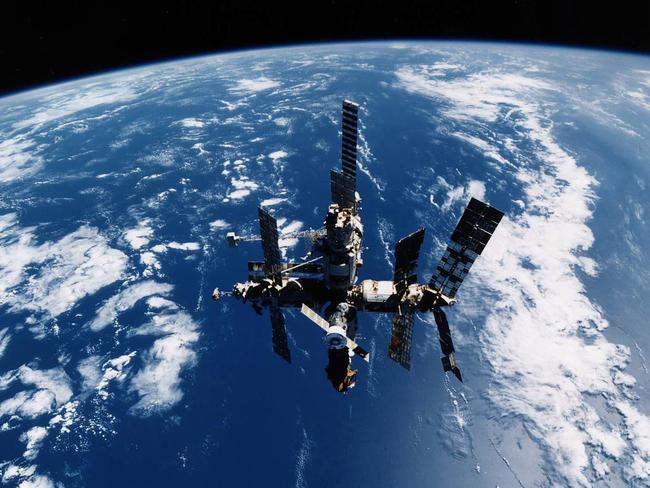China’s not the only one to lose control of a space station
CHINESE space station, Tiangong 1, crashed back to Earth today but it’s far from the only spacecraft to spiral out of control and crash land.
CHINA’S out-of-control Tiangong 1 space station is expected to re-enter Earth’s atmosphere around lunch time on Monday.
Chinese authorities and the European Space Station said falling debris poses only a slight risk to people on the ground but the fiery disintegration of the craft upon re-entry will offer a show akin to a meteor shower.
It might sound wildly negligent to lose control of a satellite and let gravity take over but this is far from the first time it’s happened.
Here are some of the most memorable times a satellite or space station has crashed back to Earth.
SKYLAB — 1979
Skylab was a US space station launched by NASA in 1973, and was manned by teams of astronauts as it orbited the earth. The following year the space agency abandoned the space station and after the lab’s orbit began to decay, by the end of the decade it was clear it was in for an unceremonial re-entry.
In the early hours of July 12, 1979, Skylab crashed on Western Australia’s south east coast, scattering debris across the Nullarbor and the eastern goldfields.
Thankfully no one was injured but we weren’t about to just cop it, so the WA government fined NASA $400 for littering.
However, NASA never paid up and in 2009 a Californian radio DJ paid the fine after collecting donations from listeners.


COLUMBIA — 2003
Another NASA space craft made an uncontrolled descent into Earth’s atmosphere in 2003. Tragically, as it returned home from a 16-day science mission, the spacecraft broke apart during its re-entry into the atmosphere, killing all seven astronauts on-board.
Columbia’s left wing was damaged by a piece of debris during launch, leaving the shuttle unable to withstand the extreme temperatures generated by re-entry, causing it to break apart.
The flaming debris from the 80-tonne craft was caught streaking across the sky over the southern United States by local TV stations.
Tens of thousands of the ship’s parts ended up scattered over Texas and Louisiana. While no one on the ground was hurt it was the second fatal disaster of NASA’s more than three-decade-old shuttle program.


UPPER ATMOSPHERE RESEARCH SATELLITE (UARS) — 2011
NASA’s space shuttle Discovery deployed the 6.5 tonne, 11-metre long climate satellite in September 1991.
The satellite studied Earth’s atmosphere for 14 years providing insight into its protective ozone layer. It measured key chemicals and provided useful information about the amount of light that comes from the sun at ultraviolet and visible wavelengths.
Eventually, the decommissioned satellite re-entered Earth’s atmosphere on September 24, 2011 and the event attracted considerable media attention, largely due to NASA’s predictions that substantial parts of UARS might reach the ground. The space agency said the risk to life was 1 in 3200.
In the end, the satellite crashed into a remote part of the Pacific Ocean.
MIR — 2001
Launched in 1986, the Mir Space Station was once a proud symbol of Soviet success in space, despite a series of high-profile accidents and technical problems.
But Russian authorities, strapped for cash after the collapse of the Soviet Union, chose to abandon the orbiting outpost in the late-1990s and devote their resources to the International Space Station.
The massive 140-tonne station was brought down by the Russian space agency over the Pacific Ocean between New Zealand and Chile, and its burning debris was seen streaking across the sky over Fiji.

SALYUT 7 — 1991
Salyut 7, launched in 1982, was the last orbiting laboratory under the Soviet Union’s Salyut program.
When the Mir space station was launched in 1986, Soviet space authorities boosted Salyut 7 to a higher orbit and abandoned it there.
It was supposed to stay in orbit until 1994, but an unexpected increase in drag by the earth’s atmosphere caused it to hurtle down in 1991.
The 40-tonne station broke up on re-entry and the parts that survived scattered over Argentina.
— With AFP



